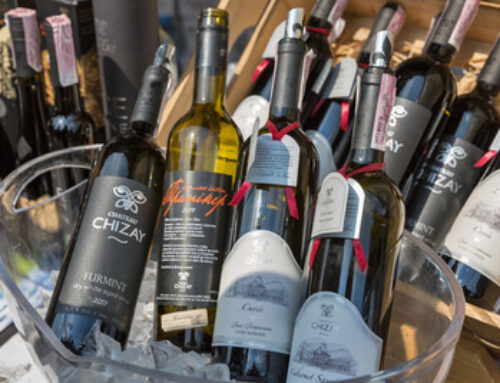
In the nonprofit sector, approximately 80% of individual donation revenue comes from the top 20% of donors. For some organizations, the ratio is closer to 90/10. No matter the exact breakdown for your nonprofit, a solid major gifts strategy is essential for maximizing your organization’s fundraising potential.
However, securing major gifts takes significantly more time and effort than soliciting lower-level contributions. Through a process known as moves management, your nonprofit needs to build individual relationships with each potential donor. This way, you’ll move them through the stages of the major donor fundraising cycle, taking them from an unengaged prospect to a committed supporter of your mission.
To help you get started with major donor fundraising, this guide will walk through four key steps in the major donor fundraising cycle: identification, cultivation, solicitation, and stewardship. While various resources may list different numbers of stages, the basic principle of tailored, systematic relationship-building remains the same, as well as the key actions you’ll take throughout the process. That being said, let’s dive in!
Identification
Also known as acquisition, the identification stage involves finding prospective major donors. The main action you’ll take at this stage is conducting prospect research—gathering data on potential donors to determine whether they’re viable major giving candidates.
The key to finding a viable prospect is looking for information that demonstrates not only their financial ability to make a major gift to your organization but also their willingness to do so. As DonorSearch’s prospect research guide explains, “Prospect research that takes into account a donor’s philanthropic tendencies and affinity for your mission provides a fuller picture…than wealth details alone.”
Here are some data points (often called indicators or markers) to focus on when looking for prospects who fit all of the above criteria:

- Capacity (wealth) indicators: Real estate ownership, SEC transactions, business affiliations, political giving history
- Philanthropic indicators: Past gifts to your nonprofit or other similar organizations
- Affinity (warmth) indicators: Deep love for your mission, nonprofit involvement history (event attendance, volunteering, board service, etc.), personal information
To find this information, use a robust prospect research database to access third-party wealth and philanthropic data, as well as any information you may have in your internal donor database on major giving candidates. Sift through your data, prioritize your outreach lists, and distill the most important information on each prospect into actionable insights for cultivation. (Pro tip: Modern nonprofits are increasingly turning to AI tools, especially predictive modeling platforms, to streamline these steps in the identification process.)
Cultivation
Once you’ve determined who your top prospects are, the cultivation phase is for getting to know them personally and familiarizing them with your nonprofit. A potential donor will be much more amenable to your major gift requests if they feel like a valuable member of your organization’s community rather than an ATM with legs!
To effectively cultivate your prospective major donors, make sure to:
- Meet with each prospect one-on-one. Take some time during this meeting to introduce the prospect to your mission and current initiatives, but spend most of it talking about their life and background. Make note of personal details you learn about the prospect, such as hobbies or upcoming life events, then bring them up in future conversations to show you’re interested in them as individuals.
- Establish regular follow-up cadences. Keep your organization top of mind after your initial meeting with a prospect by regularly contacting them via their preferred communication method. Update them on your impact, send resources to help answer any questions they have, and introduce them to other individuals at your nonprofit who are working on initiatives they may be interested in contributing to.
- Offer other opportunities for engagement. Making a few smaller asks of prospects leading up to your major gift request, such as volunteering, attending an event, or consulting on a project, can help them connect more deeply with your mission. NXUnite’s donor relations guide recommends choosing opportunities that align with prospects’ interests so they’ll be more receptive to your requests.
As you build these relationships—which usually takes several months—continue researching your prospects to stay on top of any changes to their wealth and philanthropic history. This way, you can be even more confident about your prospects’ giving capacity, interests, and motivations as you prepare to request a major gift.
Solicitation
Now comes the part of the major donor fundraising cycle where you actually get donors to give! There is no set time to transition from cultivation to solicitation—you’ll need to gauge your relationship with each individual prospect to determine when to make your request.
Schedule another meeting with each prospect to present your fundraising ask. This way, you’ll get their reaction in real time so you can collaborate with them to come to an agreement that works for them and your nonprofit.
Be specific in your initial ask about how much you want the donor to give and what initiative you want them to designate their gift for. Based on their history, choose a starting amount that isn’t so high as to offend them but also doesn’t leave money on the table, and be prepared to adjust depending on their response. You should also have some backup ideas in mind for designations that align with the prospect’s interests and values in case they don’t want to contribute to the initiative you initially suggest.
Additionally, note that most major gifts aren’t given as one-time cash donations, rather as extended pledges or as a mix of cash and non-cash contributions. Prepare a flexible timeline for pledge payments, and stay open to discussing options for non-cash gifts like stock donations or donor-advised funds.
Stewardship
The basic purpose of stewardship is to continue fostering relationships with major donors post-contribution. A few key actions to take during this stage include:
- Showing appreciation. Within 24 hours of receiving a major gift, call the donor to confirm that the payment was processed and initially thank them for their contribution. However, because of how impactful their gifts are, major donors deserve additional expressions of gratitude. Depending on their preferences, you might recognize them during an event or awards presentation, shout them out in your annual report, or invite them to a donor appreciation dinner with other high-impact supporters.
- Continue your regular follow-up cadence. Update donors on the impact of their gifts, offer additional opportunities for involvement, and share your plans for the near future to keep them engaged with your organization.
- Ask for feedback. In your follow-up conversations, ask donors what they liked about your organization’s cultivation, solicitation, and recognition of them and where they think you could improve. Donors feel valued when your nonprofit requests their input, plus you’ll gather data that will help you hone your processes going forward. You can also lay the groundwork for long-term engagement by asking if the donor would be open to joining a feasibility study or consulting on a project in the future.
Some fundraising experts split the post-donation portion of the major donor fundraising cycle into three steps: stewardship (recognizing donors), retention (following up and maintaining engagement), and upgrade (requesting another larger contribution). No matter how your nonprofit approaches this stage, remember that the ultimate goal is to turn major donors into loyal, impactful, long-term supporters of your mission.
The Bottom Line
As your nonprofit expands its major giving program, you may have multiple donors at each stage of the major donor fundraising cycle at any given time. Ensure your team is equipped with the right tools and strong organizational skills so nothing falls through the cracks and you can continue building relationships that lead to increased support for your mission.
About the Author
 Sarah Tedesco is the Executive Vice President of DonorSearch, a prospect research and wealth screening company that focuses on proven philanthropy. Sarah is responsible for managing the production and customer support department concerning client contract fulfillment, increasing retention rate and customer satisfaction. She collaborates with other team members on a variety of issues including sales, marketing and product development ideas.
Sarah Tedesco is the Executive Vice President of DonorSearch, a prospect research and wealth screening company that focuses on proven philanthropy. Sarah is responsible for managing the production and customer support department concerning client contract fulfillment, increasing retention rate and customer satisfaction. She collaborates with other team members on a variety of issues including sales, marketing and product development ideas.





